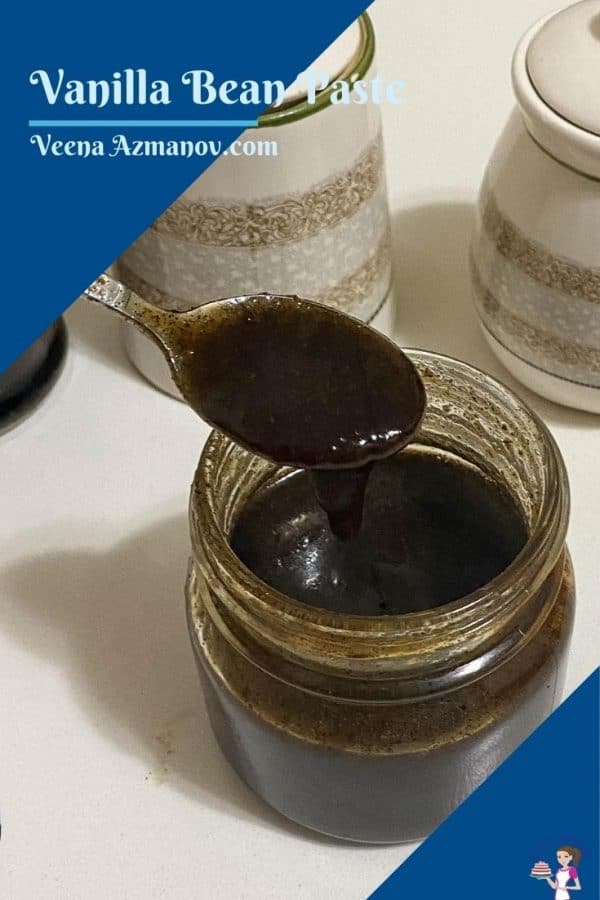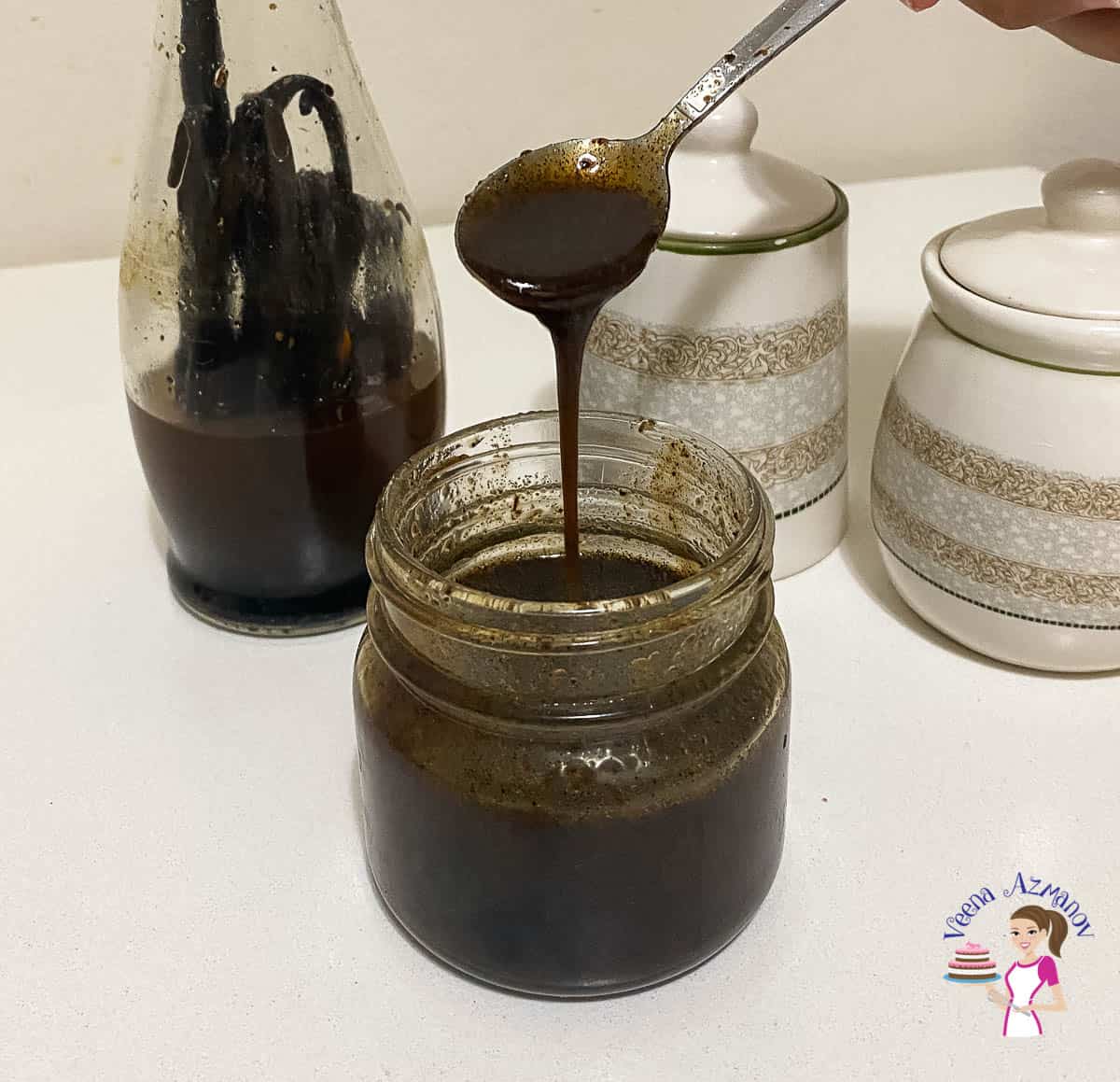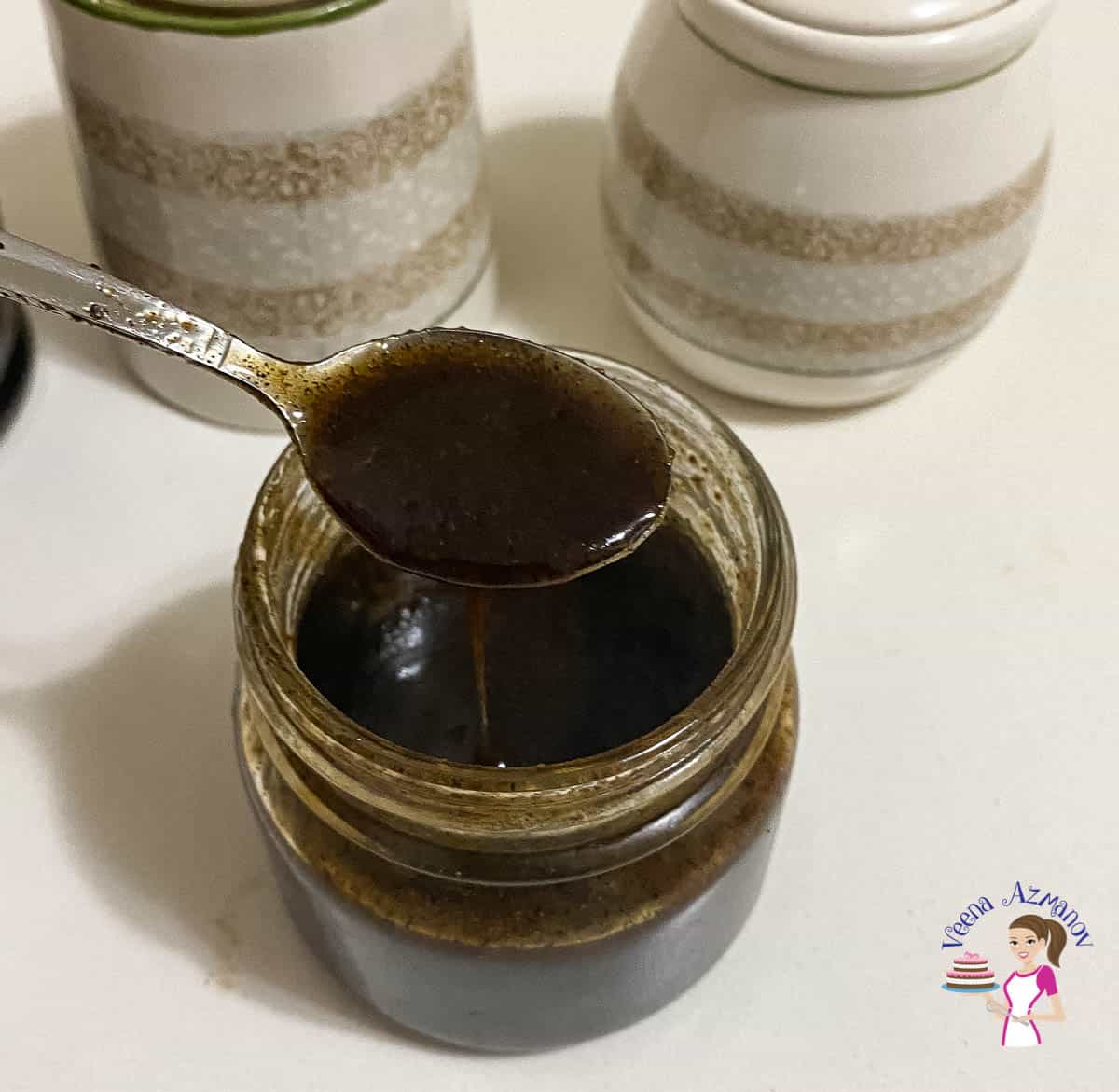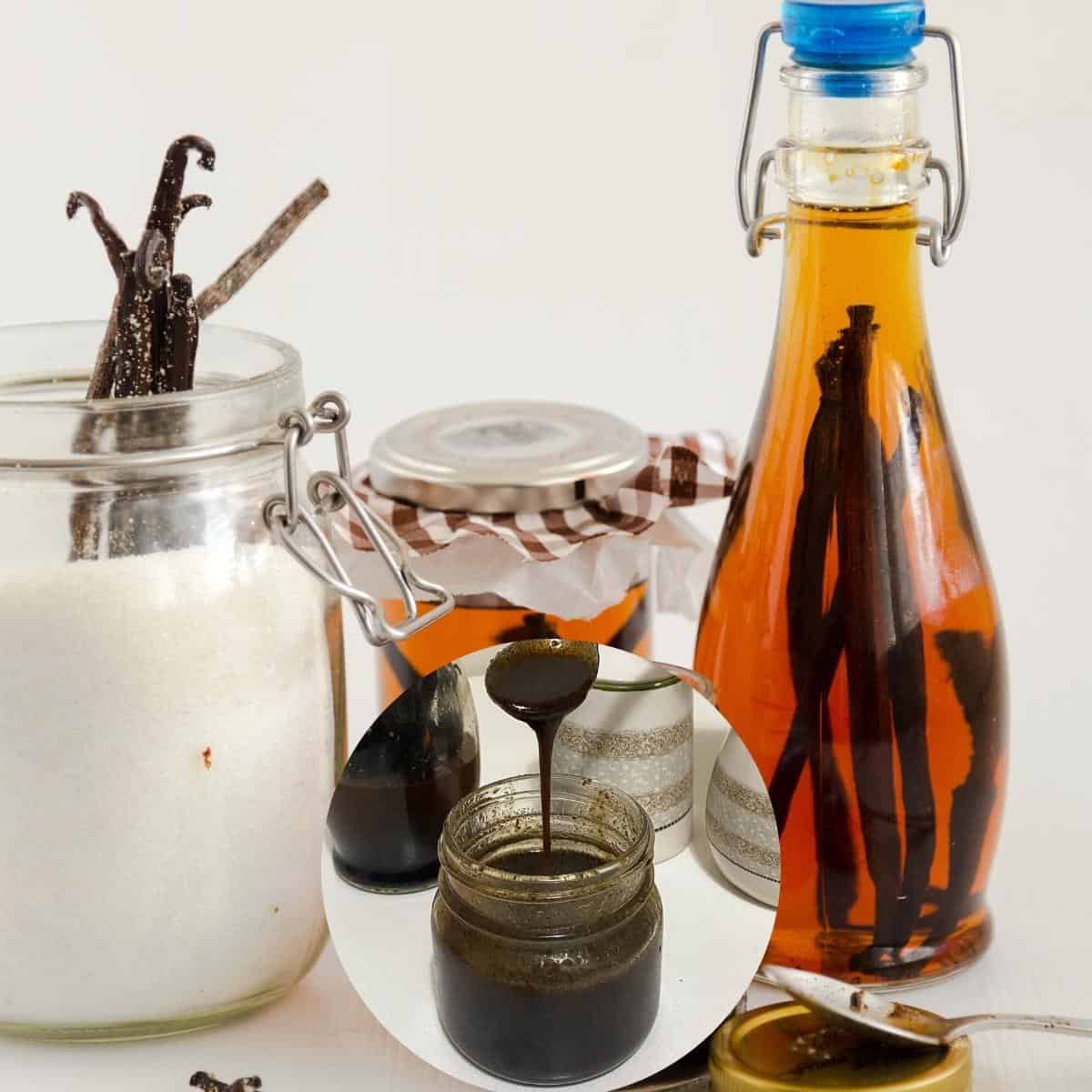A vanilla beans contain more than 300 flavor compounds. Vanilla bean paste is a thick, syrupy mixture made from vanilla extract, vanilla bean powder, sugar, and sometimes thickening agents like xanthan gum. It typically contains vanilla bean specks, which gives it a similar appearance to freshly scraped vanilla beans. Vanilla bean paste has a rich and intense flavor, similar to that of vanilla extract, but with the added visual appeal of the vanilla bean specks. It can be used in place of vanilla extract in recipes, with the added benefit of the vanilla bean specks for visual appeal. So while, homemade vanilla extract has a depth of flavor that is hard to beat, especially if it was made with vanilla beans. Vanilla paste is a potent and economical form of pure vanilla extract. With a little effort, you can make your own.
Types of vanilla beans
There are several different types of vanilla beans, each with its own unique flavor profile and characteristics. Each type of vanilla bean has its own unique flavor profile, and the choice of which to use often depends on personal preference and the specific flavor profile desired in the recipe.
Madagascar Vanilla Beans: Also known as Bourbon vanilla beans, Madagascar vanilla beans are the most common and widely used vanilla beans. They have a rich, creamy flavor with sweet and buttery notes, making them ideal for a wide range of dishes, especially baked goods. Tahitian Vanilla Beans: Tahitian vanilla beans are known for their floral and fruity aroma, with cherry-like undertones. They have a delicate flavor that is often described as more floral than other varieties, making them a popular choice for desserts and other dishes where a subtle vanilla flavor is desired. Mexican Vanilla Beans: Mexican vanilla beans have a bold and spicy flavor, with hints of cinnamon and nutmeg. They are often used in chocolate-based desserts and savory dishes, adding a unique depth of flavor. Indian Vanilla Beans: Indian vanilla beans have a similar flavor profile to Madagascar vanilla beans, with rich and creamy notes. They are often used in Indian and Middle Eastern desserts, adding a warm and aromatic flavor. Indonesian Vanilla Beans: Indonesian vanilla beans are known for their smoky and woody flavor, with hints of chocolate. They are often used in savory dishes and marinades, adding a complex and earthy flavor to the dish. Ugandan Vanilla Beans: Ugandan vanilla beans are known for their bold and robust flavor, with earthy and smoky notes. They are often used in baking and desserts, adding a deep and complex flavor to the dish.
Why make your own vanilla bean paste?
Vanilla beans may seem pricey, but they’re actually a great kitchen investment. The best part is that you can make more with the same price but by buying vanilla beans rather than the premade bottle. There is more than one use of the bean. You can make bean paste after you’ve used it to make your extract or sugar! Basically, getting more for your money. I find making homemade vanilla is more affordable to me. I buy vanilla pods when I can in bulk and when there are good offers. So I’m always looking for good vanilla deals. And I have vanilla bottles on the back of my shelf at all times. So when one gets done I go for the next making sure to refill the empty and put it at the back of the shelf. It’s gluten-free, eggless, and dairy-free so you can add it to flavor all your desserts. Vanilla is one of the most famous flavors in the world which also makes it it the perfect homemade gift foods?
Ingredients and substitutes
Vanilla – If you go to purchase vanilla beans you will usually find that there are several types of vanilla beans. Those that come from Madagascar, which is considered rich and robust in flavor and aroma. Then, there is a Tahitian vanilla bean which is said to have a subtle floral and fruity flavor and aroma. The third most popular is an African vanilla bean mostly from Uganda, which is said to be smoky and bold in flavor. There is also a Mexican vanilla bean, which is said to be smooth and spicy.I have never used any other than Madagascar so far. That’s the one I get locally and in my budget when I shop online. Corn syrup – The purpose of the corn syrup in this recipe is to prevent the sugar from crystallizing. If you do not have corn syrup, you can use any other inverted sugar, such as glucose as well. These are natural thickeners so they make the paste thick. Honey / Agave Syrup – When making vanilla bean paste, I often use honey instead of making sugar syrup. This is of course when I do not want to make the sugar syrup. However, if the sugar syrup or honey does not work with your diet, you can also use agave syrup. Agave syrup can be expensive so not the most popular of course.
Homemade vanilla bean paste
1. Honey or agave method
Beans – Split each vanilla bean in half down the middle lengthways to open the seeds. Scrape the center and roughly chop the beans into small pieces. Blend – Place all ingredients (vanilla beans, scrappings, agave syrup, and vanilla extract) in a food processor and blend until you have a thick puree consistency.Pro tip- I usually use my spice grinder as it does a great job to blend the tough beans Strain – Pour the mixture thru a sieve using a firm spatula to drain as much of the vanilla paste as possiblePro tip – Ideally, you should not need more liquid but If necessary add a tablespoon or more of syrup Store – Pour in a clean sterilized mason jar or bottle and store in a cool dry place in the pantry for up to a year. Use in any recipe that calls for vanilla bean paste
2. Sugar syrup method
Beans – Split each vanilla bean in half down the middle lengthways to open the center seeds. Scrape the center and roughly chop the beans into small pieces. Simple syrup – In a heavy-based saucepan add water, sugar, corn syrup, and chopped vanilla beans. Cook on medium-low until you get a thick syrup consistency. Let cool slightly. Blend – Place in a food processor and blend until you have a thick puree consistency. Strain – Pour thru a sieve, and use a firm spatula to drain as much of the vanilla paste as possible.Pro tip – Ideally, you should not need more liquid but If necessary add a tablespoon or more of syrup Store – Pour into a clean sterilized mason jar or bottle, and let cool completely before you close it. Store in a cool dry place in the pantry for up to a year.
3. Vanilla bean powder
Combine – In a mason jar combine the vanilla bean powder and honey or agave syrup. Store in a cool dry place.Pro tip – It is easier to use the paste as most recipes call for 1/2 or 1 tsp paste or extract.
4. My cheat method- Homemade vanilla bean paste
I use the vanilla beans from my jar of vanilla extract that has been sitting in there for 4 months. After 4 months, these beans become really soft but still have lots of flavors. I place about 10 vanilla beans in a food processor with 1/2 cup honey until smooth. Strain and use a firm spatula to remove as much of the paste as I can. Store in a mason jar – this will last for a year or more.
When should you use vanilla extract, bean paste, or vanilla sugar
You can use vanilla extract, vanilla bean paste, or vanilla sugar depending on your recipe and personal preference:
Vanilla Extract: Vanilla extract is a versatile option and can be used in most recipes that call for vanilla flavoring. It’s particularly useful in recipes where liquid ingredients are already present, such as cake batters, cookies, and frostings. Use it when you want a strong, pure vanilla flavor. Vanilla Bean Paste: Vanilla bean paste is a great alternative to vanilla extract when you want the visual appeal of vanilla bean specks in your dishes. It’s ideal for recipes where you want to see the vanilla flecks, such as in custards, ice creams, and whipped creams. It also has a rich flavor similar to vanilla extract. Similarly, bean paste is priceless in recipes such as vanilla pastry cream, vanilla pudding, or vanilla-based desserts like vanilla ice cream, and vanilla bavarian cream as compared to strawberry Bavarian cream. Vanilla Sugar: Vanilla sugar is perfect for adding a subtle hint of vanilla flavor to recipes where you also need sugar, such as in coffee, tea, or sprinkled over baked goods before baking. It’s a great way to infuse a delicate vanilla flavor into your dishes without adding extra liquid. I also like to use vanilla sugar for my pies, tarts, creme brulee.
Frequently asked questions
Thank you for sharing - Save for later

















